In the hills of Sicily in 1526, a child was born who would challenge all expectations of his time. The son of African slaves, illiterate and constantly humiliated for his color, this man would eventually become one of the most venerated saints of the Catholic Church. This is the extraordinary story of Saint Benedict the Moor—a man who transformed discrimination into sanctity, ignorance into divine wisdom, and humility into spiritual leadership.
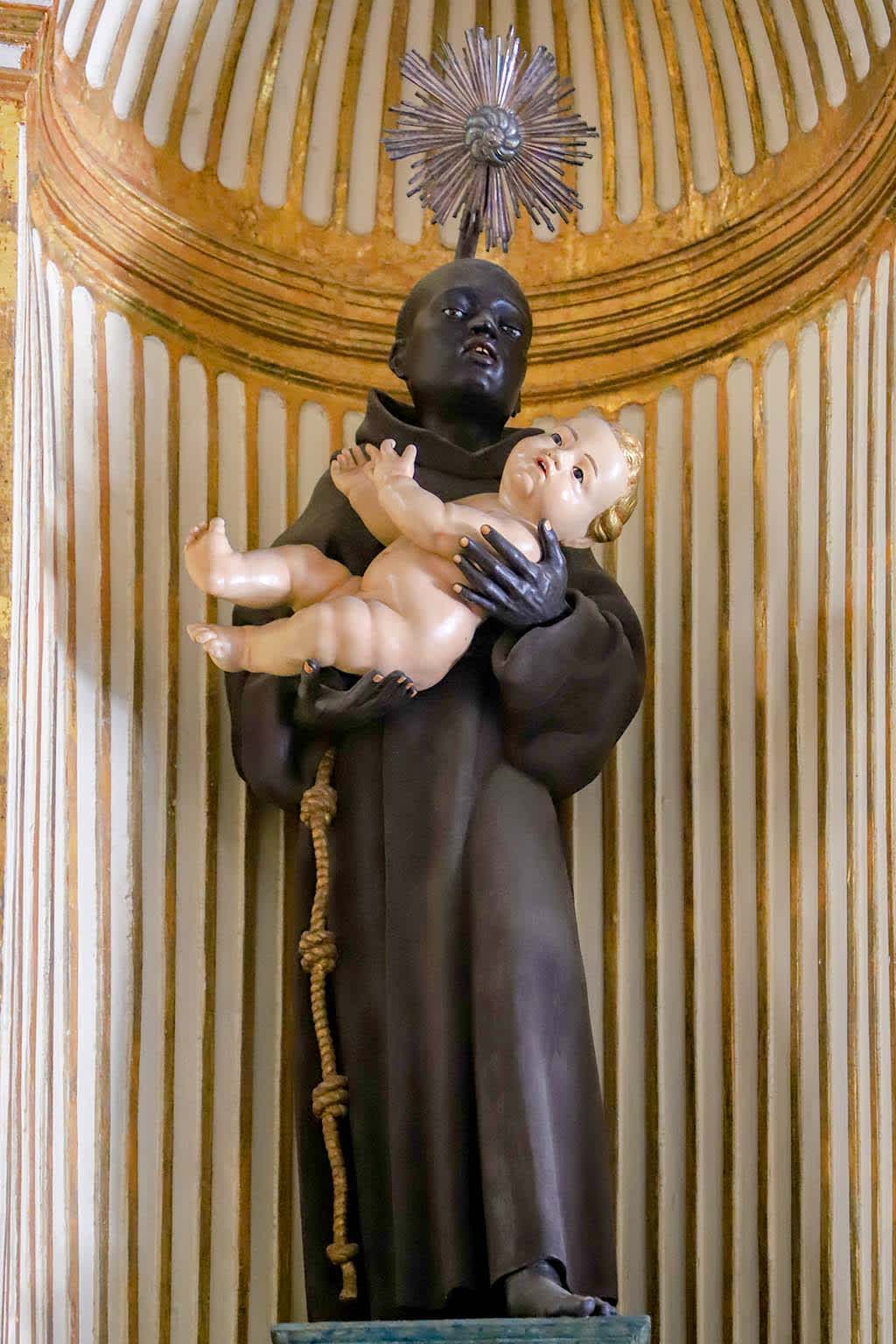
Statue of St. Benedict the Moor holding the baby Jesusblackpast
Saint Benedict’s life journey from bondage to sainthood demonstrates how faith can transcend societal barriers and prejudices. His powerful witness continues to inspire millions worldwide, especially in African American Catholic communities who find in him a model of dignity and spiritual excellence.
Historical Context: 16th Century Sicily
Benedict Manasseri was born near Messina, Italy, to African slaves Christopher and Diana Manasseri. His parents had been taken from Africa and sold as slaves in Sicily, but despite this traumatic background, they instilled in their son a profound faith that would become the foundation of his life’s journey.
During this era, Sicily was part of the Spanish Empire under the Crown of Aragon. The Mediterranean region was a complex multicultural society, but one in which racial prejudice was deeply entrenched. People of African descent faced severe discrimination, limited opportunities, and were often subjected to cruel treatment.
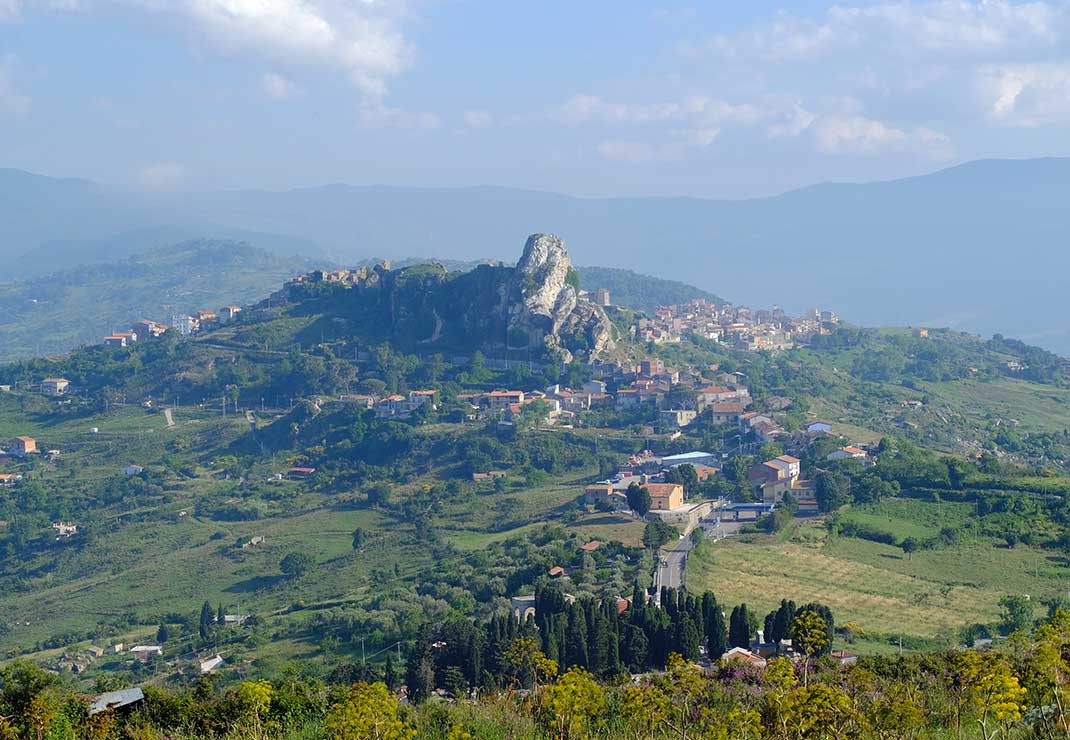
San Fratello, Sicily, a medieval town atop rolling green hillssicilyenjoy
Benedict spent his early years tending flocks in the verdant hills around San Fratello, an occupation that provided him with long hours of silent contemplation under the Mediterranean sky 11. Despite extreme poverty, the young shepherd developed an extraordinary reputation for his supernatural patience and genuine kindness—qualities that shone like diamonds amid the roughness of his era 2.
Early Signs of Holiness
His neighbors began calling him “the Holy Moor” even during his youth, recognizing something special in his gentle nature 12. Benedict’s generosity became legendary even when he possessed almost nothing 11. He regularly distributed his meager wages among beggars and the needy, keeping for himself only the minimum necessary to survive 10.
In his free hours, he could be found caring for the sick, consoling the bereaved, or simply offering his silent presence to those who suffered 11. This active compassion contrasted dramatically with the social indifference typical of the time 12.
Childhood and Youth: From Slavery to Freedom
Benedict’s kindness was constantly tested by human cruelty 11. Racial insults were part of his daily routine, with people shouting offenses about his African appearance whenever he walked through the streets of San Fratello 12. Merchants refused to serve him, children threw stones, and adults treated him as a second-class citizen 10.
Still, Benedict responded to each aggression with silent dignity and genuine forgiveness—a response that intrigued and eventually impressed even his detractors 11 12.
The Turning Point
The decisive moment came when Benedict was twenty-one years old 11. During a local fair, a group of young men began insulting him publicly, using the most degrading terms possible to describe his African heritage 12. Instead of reacting with anger or fleeing in shame, Benedict remained calm—responding to insults with words of forgiveness and even offering help to his aggressors 10.
This extraordinary demonstration of Christian grace was witnessed by Jerome Lanza, a nobleman who had renounced his inheritance to live as a Franciscan hermit 11. Lanza was deeply impressed with the young shepherd’s spiritual maturity and invited him to join his community of hermits on Mount Pellegrino 12.
This calling represented a unique opportunity for a young black and poor man—the chance to dedicate his life entirely to God in an era when such a vocation was rarely offered to people of his origin 10 11.
Religious Vocation: The Humble Cook Becomes a Leader
Benedict’s response was immediate and radical 12. He sold his only material possessions—a pair of oxen of which he was proud—and distributed all the money among the poor before following Lanza to the mountain 11. This decision marked the beginning of a spiritual journey that would transform not only his own life but also the Church’s understanding of sanctity and leadership 10.
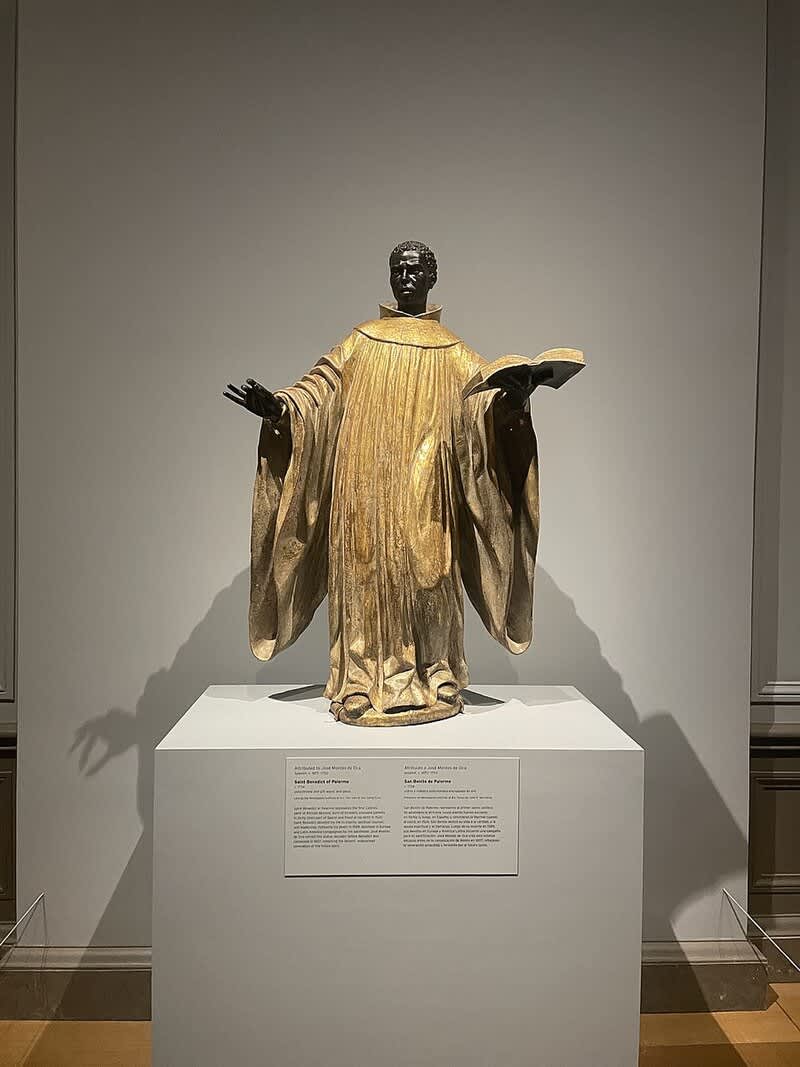
Statue of Saint Benedict of Palermo dressed as a Franciscan friarcommons.wikimedia
Life at Mount Pellegrino
Hermit life on Mount Pellegrino began with Benedict assuming the humblest possible role—cook for the small Franciscan community 12. This position, far from being a limitation, became the stage where his extraordinary gifts began to manifest undeniably 11. His brothers soon noticed that, regardless of ingredient scarcity, Benedict’s pots always produced abundant and nutritious meals—as if food multiplied under his blessed hands 10.
Benedict’s radical humility impressed even the most experienced hermits 12. He woke before dawn for silent prayer, maintained rigorous fasts that followed Saint Francis’s example, and treated each domestic task as an act of divine worship 11. His presence brought palpable peace to the community 10.
Unexpected Leadership
When Jerome Lanza died, the community faced a crucial decision about leadership 12. Despite Benedict being the youngest and the only Black member of the group, his brothers unanimously elected him as superior at twenty-eight years of age 11. This revolutionary choice challenged all social conventions of the time but reflected universal recognition of his extraordinary spiritual maturity 10.
Extraordinary Gifts and Miracles
Saint Benedict’s miracles began to manifest so consistently that even the most hardened skeptics could not deny the supernatural reality that surrounded him 11. His ability to multiply food became legendary at the Convent of Santa Maria de Jesus, where pots always produced abundant meals regardless of the scarcity of available ingredients 12.
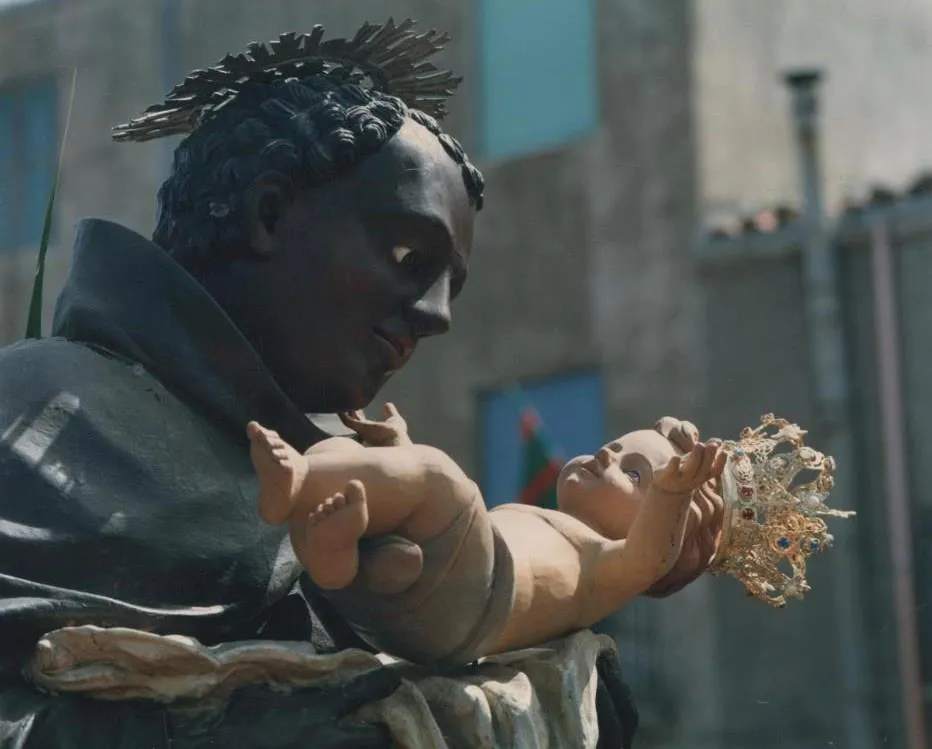
Statue of Saint Benedict of Palermo as a Franciscan friar holding the baby Jesusblackcatholicmessenger
Documented Miracles
Witnesses reported that during storms that prevented any departure to seek food, Benedict filled his pots with water and began to pray—by morning, they found them full of fresh fish 10. Miraculous healings constituted another extraordinary aspect of his ministry 11.
Canonization records document cures of various ailments including breast cancer, hernias, and other serious conditions 12. One particularly notable case involved the resurrection of the Count of Gagliardi, who was literally on his deathbed when Benedict interceded 11.
Divine Wisdom Without Education
The most intriguing phenomenon was his intuitive theological knowledge that left Vatican scholars perplexed 10. Despite being completely illiterate, Benedict possessed an understanding of Scripture and doctrinal truths that surpassed that of many doctors of theology 12.
He memorized and contemplated Scripture so deeply that even Vatican theologians sought his insights on complex issues 11. This infused wisdom represented one of the most unique aspects of his sanctity 10.
Leadership and Legacy: A Revolutionary Model
In 1564, Pope Pius IV issued a decree that all independent hermit communities should unite with established religious orders 12. Benedict’s group was absorbed by the Order of Friars Minor Franciscan and transferred to the Convent of Santa Maria de Jesus in Palermo 11.
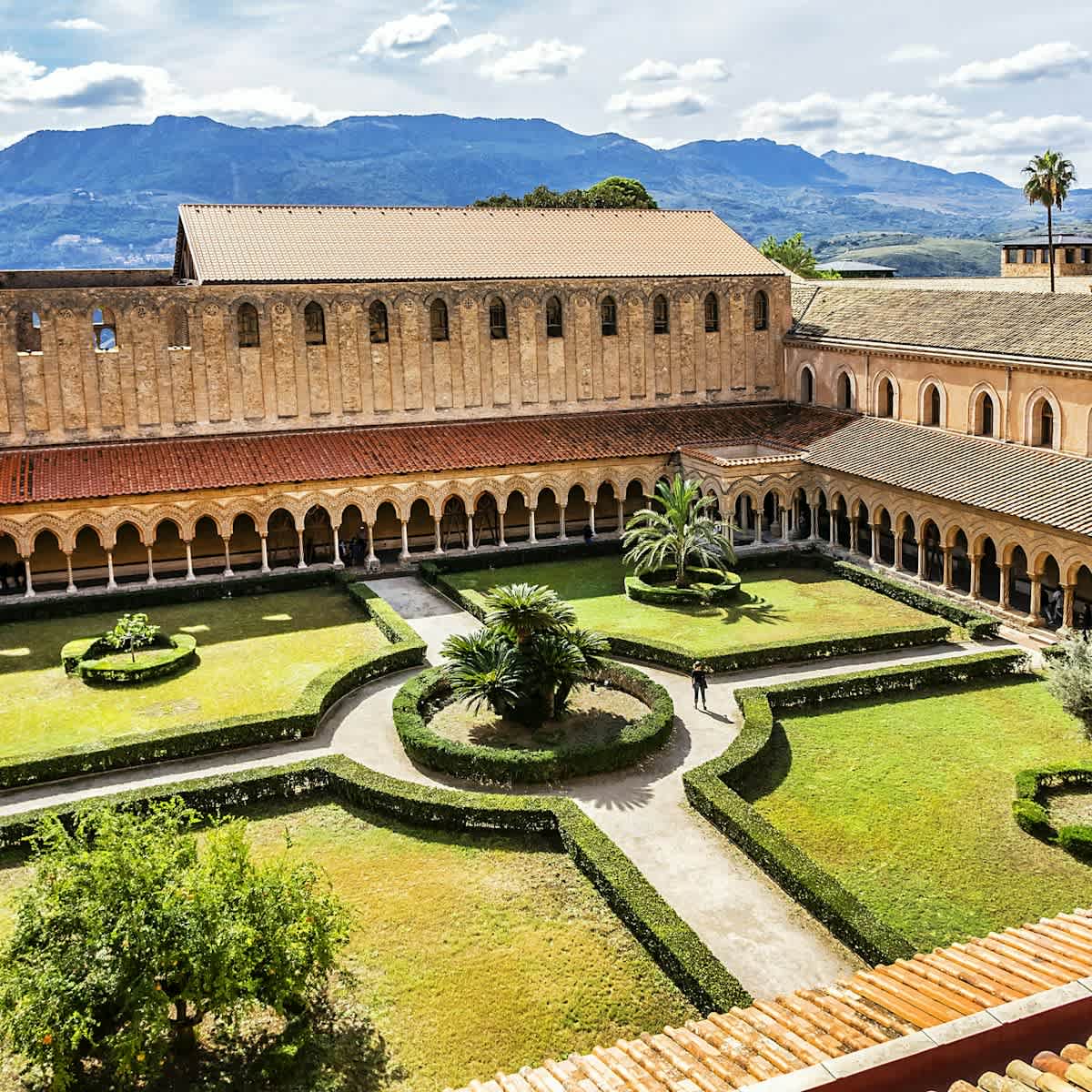
Courtyard of the Santa Caterina d’Alessandria Monastery in Palermo, Sicilylonelyplanet
Initially, Benedict returned to his favorite functions as cook, but the Franciscan superiors quickly recognized that they possessed something very special in their ranks 10. His appointment as Community Guardian and Master of Novices represented a silent revolution in the sixteenth-century Franciscan hierarchy 12.
Servant Leadership
These positions of supreme authority were traditionally reserved for educated priests of noble origin, but Benedict’s extraordinary wisdom forced superiors to recognize that sanctity completely transcended social conventions 11. His approach to leadership was revolutionary for the time 10.
Instead of governing through hierarchical authority, Benedict led by example—maintaining the same rigorous austerities he practiced as a simple cook 12. This servant leadership created an atmosphere of peace and spiritual growth that completely transformed the conventual dynamic 11.
When his period as Master of Novices ended, Benedict gladly returned to his favorite culinary functions, demonstrating that true greatness resides in humble service, not in titles or positions 10 12.
Death and Canonization: From Earth to the Altars
In March 1589, at sixty-three years old, Saint Benedict became gravely ill, but even on his deathbed, he demonstrated the prophetic gifts that had made him famous 11. He predicted with exact precision the moment of his death, informing the friars that he would depart at the exact hour he specified 12.
A Holy Death
Benedict’s death on April 4, 1589, occurred exactly at the predicted time—surrounded by his Franciscan brothers and consoled by a vision of Saint Ursula 10. Traditions relate that his face maintained an expression of radiant peace even after death and that a supernatural fragrance emanated from his body 11.
News of his death spread rapidly through Palermo and beyond, provoking a spontaneous demonstration of popular veneration that surprised even ecclesiastical leaders 12.
Path to Canonization
The formal canonization process progressed through the centuries 11:
- 1592: Body found incorrupt three years after death 10
- 1611: King Philip III of Spain financed a special shrine 12
- 1743: Beatified by Pope Benedict XIV 11
- 1807: Canonized by Pope Pius VII 10
Benedict was the first African to be canonized through the regular canonical process, establishing April 4 as his official liturgical feast in the Catholic calendar 13.
Modern Challenges
Tragically, in July 2023, wildfires devastated the Convent of Santa Maria de Jesus, destroying the historic building where Benedict’s incorrupt relics had been preserved for more than four hundred years 12. Only his skull was saved from the flames 11. This devastating loss mobilized Catholics worldwide to support the convent’s reconstruction 10.
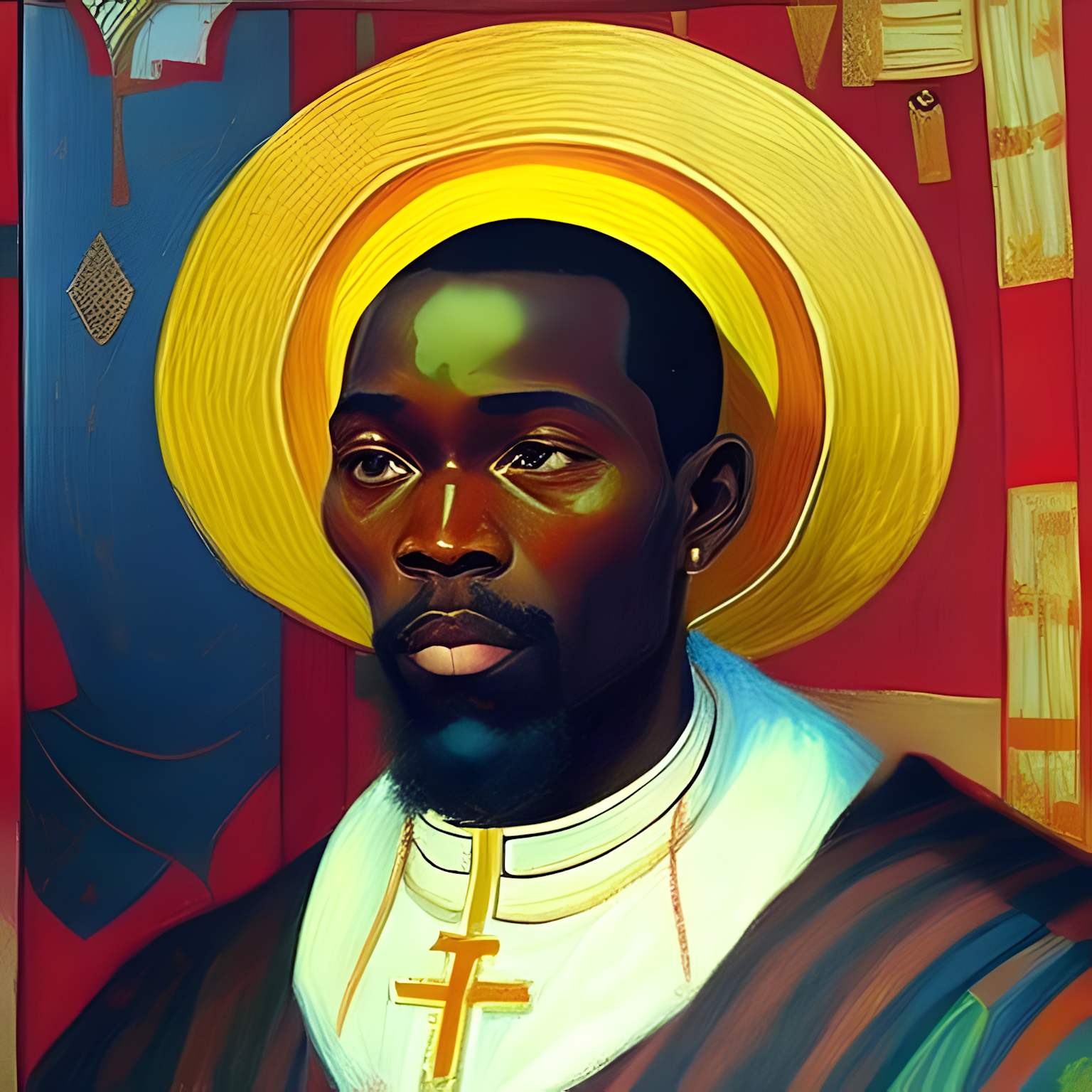
A modern artistic interpretation of Saint Benedict the Moorsdcason
Conclusion: A Saint for Our Times
Saint Benedict the Moor remains one of the most extraordinary figures in Catholic history, whose life transcended all imaginable barriers of his time 11. Son of African slaves who became a venerated spiritual leader, illiterate who possessed profound theological wisdom, black man who conquered universal respect in a prejudiced society—his trajectory defies all human expectations and demonstrates the transformative power of divine grace 12.
Lasting Impact
His documented miracles, exceptional leadership, and radical sanctity established a legacy that continues inspiring millions of Catholics worldwide, especially in African-descendant communities who find in him a powerful model of dignity and spiritual excellence 10.
Saint Benedict’s lasting impact manifests through numerous parishes dedicated in his honor in the United States, Brazil, and other nations with significant African-descendant populations 11. As patron of African Americans, African missions, and Palermo, he offers powerful testimony that sanctity knows no racial, educational, or social boundaries 12.
Relevance Today
His life remains relevant in the twenty-first century, offering hope for marginalized communities and challenging persistent prejudices about human dignity and spiritual potential 11. In a world still struggling with racial divisions and social inequalities, Saint Benedict the Moor’s example reminds us that true greatness comes not from external conditions or societal approval but from interior virtue and unwavering faith 10.
His journey from slavery to sainthood continues to inspire all who encounter his remarkable story, proving that with God’s grace, any barrier can be overcome and any person can achieve the heights of holiness 12.
References:
- Wikipedia: Benedict the Moor
- Saint Benedict the Moor (Original), Uptown | Pittsburgh, PA
- Tradition In Action: St. Benedict the Moor – April 4
- New Statue of St. Benedict the Moor blessed and installed
- Saint Gregory the Great Catholic Church: Saint Benedict the Moor
- Roman Catholic Saints: St Benedict the Moor
- Catholic Online: St. Benedict the Moor
Connect with Us!
Explore more Catholic content and support our mission:

